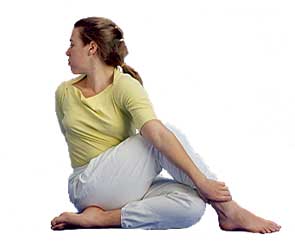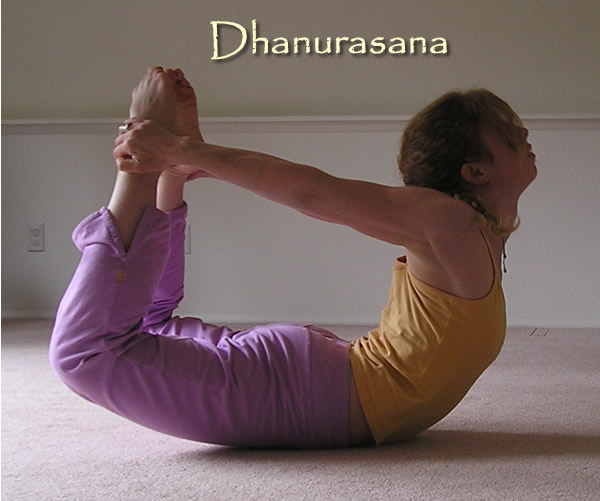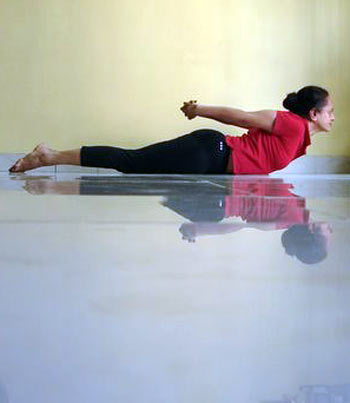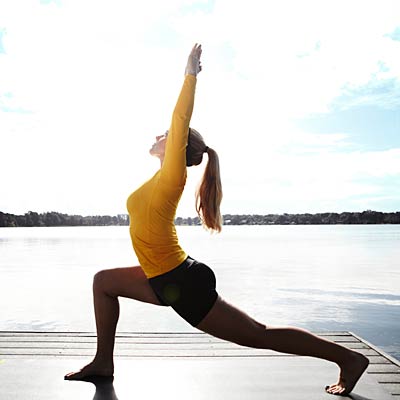Gomukhasana
The word Gomukha means cow’s mouth. Sit comfortably on the ground. Spread your legs in the front. Hands resting on the floor by the side of your waist. First fold your right knee and take it close to your left buttock, bringing it under the straightened left leg. Adjust the position of your right foot, so that its heel remains closer to your left buttock and toes facing outwards. Bring your left leg over the folded right leg, until the left foot comes to the side of your right buttock. Adjust the position of your left foot, so that its heel remains closer to your right buttock and toes turned outwards. Adjust the position of both feet, so that the folded left knee comes exactly over the folded right knee and the feet are properly placed by the side of your buttocks. You may have to apply some pressure for bringing one knee over the other. Maintain this position for as long as you can comfortably do.


Steps :
- Keep your back comfortably straight and both hands resting on the folded upper knee.
- Bend your right arm in the elbow so that the bent elbow faces upwards and is in a vertical position behind and close to your head.
- Bend your left arm in the elbow so that your bent elbow points towards the floor.
- Try to bring both your hands close to each ether so that your right index finger could be interlocked with the left index finger. While doing so make sure that you do not over exert in any manner.
- Even if your fingers do not interlock, bring them as close to each other as possible.
- In the final position, your head should remain in line with the spine, with your right elbow pointing upwards and it should be behind your head.
- Your left elbow should be pointing to the ground. Interlocked index fingers should be gently pulled against each other in opposite directions, so that there is a sustained stretch in both the arms. Don’t twist your spine or bend sideward or bend your neck for producing stretch in the muscles. Be gentle with them. Maintain final position for as long as you can comfortably do.
Advantages
This gives strength to knees and feet. It prevents disorders of the semen and prevents any enlargement of the testicles. It is also beneficial for the nervous system, lungs and heart.









